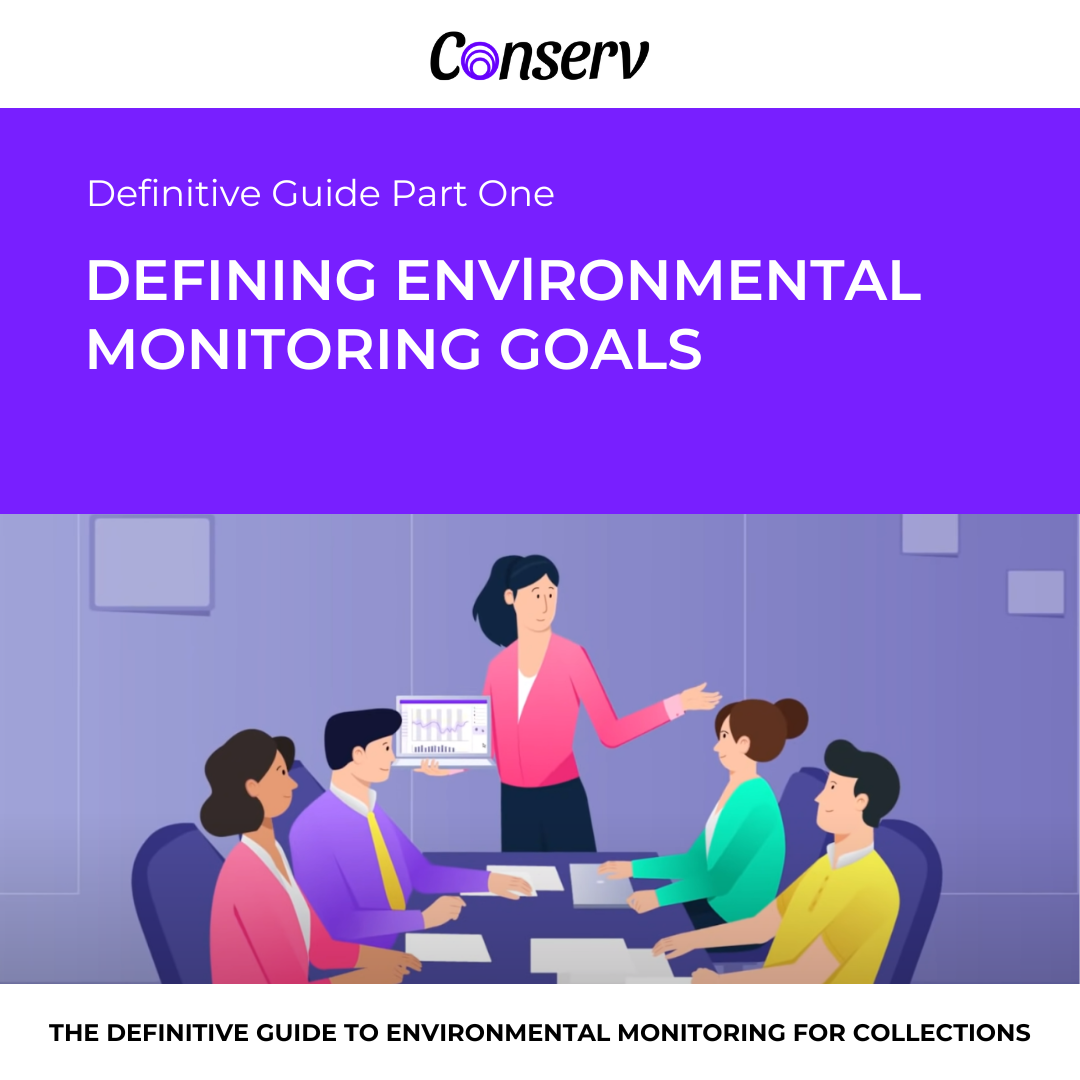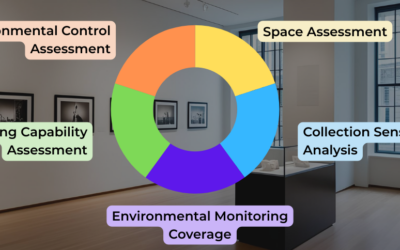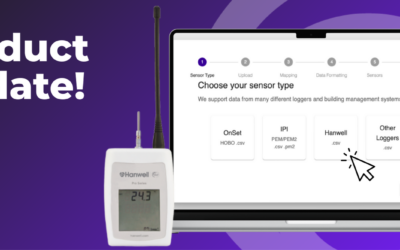Defining environmental monitoring goals – what are you looking to understand about your collection?
When setting up an environmental monitoring program one of the first questions to ask is what are you looking to monitor. Like with any program you need to have an idea of what you are trying to accomplish. Having an understanding about what your monitoring goals are will allow you to determine placement of loggers and influence data analysis, yielding results that should inform actions to better improve the collection environment or energy use in some manner.
As you begin to plan your monitoring program, sit down with your environmental management team to determine what the goals of the monitoring program are.
You may find that the team as a whole has several different monitoring goals. Some members of the team may aim for collection preservation while others may be looking to improve sustainability. In the end, having multiple goals is perfectly fine as long as they are properly defined.
Understanding your building
A major goal of many institutions that establish a data monitoring program is to help identify how their building may influence their collection spaces. Whether you have a mechanical system or not your building will play a significant role in your environment.
If your building is poorly insulated you may see how quickly exterior temperatures impact your collection space.
In facilities with little to no vapor barrier you can see how major moisture events, like storms, can impact your collection space. However, understanding your building is not limited to only these events.
Proper logger distribution throughout a facility can help identify airflow through a building, variations in environment that may not previously have been known or even stratification in high spaces.
The building will significantly influence what conditions you are capable of maintaining. By establishing a monitoring program, you can begin to point out how and where some of these influences occur. This will help inform how you use your building or changes you make to the facility.
For example, you may change set points based on seasons, move collections to naturally cooler rooms, or alter a collection space by adding insulation to an exterior wall.
Know your collection environment
While many standards exist for collection spaces, in reality not many facilities or mechanical systems can reliably achieve and hold these conditions for extended periods of time.
If your institution has implemented any form of environmental control standards, one goal of a monitoring program is to first and foremost ensure that these conditions are being achieved.
Data monitoring can help you verify how well your institution is adhering to the desired standards as well as how much the temperature and relative humidity (RH) may deviate.
Information from this data should not only answer the question of whether or not you are maintaining the right temperature and RH, but also allow you to monitor and evaluate any adjustments that are made to correct any issues you may have identified.
Meet loan requirements
Nearly all loan materials come with specific temperature or relative humidity standards that are required as a condition of the loan agreement for the items. The organization typically will not only require proof that your building is capable of producing the desired conditions, but holding them as well.
Data from a monitoring program will act as a great third-party witness to what your facility is capable of achieving. It can help identify what rooms within your building may be best for a potential loan.
Also, if for some reason your facility falls short of the desired standards, the data can help identify where your building may be deficient and, as you correct the deficiencies, provide feedback if the actions are beneficial.
Optimize your facility
One of the best goals that you can set for a data monitoring program is the optimization of your facility.
With climate change and energy conservation on everyone’s mind, this is a goal of many institutions.
When establishing a data monitoring program for optimization, the program should include collecting temperature and relative humidity information from HVAC or other mechanical systems that serve the collection spaces. This data will show how much heating, cooling, dehumidification and humidification is applied to the air as it passes through the system. Working with members of the facility staff, one would compare this data to the desired condition in the collection spaces to determine if the systems are running as efficiently as possible or if they can create a better condition and potentially use less energy.
This type of optimization is not only limited to the operation of the HVAC system but any mechanical system that may potentially have an influence on the collection environment and even the lighting in the building as well.
Data is your witness
Overall data should serve as a non-partial witness to what is happening in your facility. How you use that data and what your goals may be are determined by each institution. The purpose is to use the data to inform about the collection space and make educated decisions about if any improvements or changes are needed.
When I first started doing data analysis I received great advice from my mentor that I still use to this day, “You cannot manage what you do not measure.”
Without data, any changes to set points, a building, or even collection organization are arbitrary and may have unknown consequences.
More data = better decisions
The goals that are set are all determined by each institution. The influencing factors can be the needs of the collection, facilities, or loan requirements to name a few. Meet with members of your environmental management team to help determine what the goals are for your intuition.
It is very likely that no matter what your initial goal is, new information from the data may inform other aspects of your facility or operations that you were not intending to find.
The great thing about data is that you can never have too much of it, and the more you have, the better educated decisions you can make towards your goals.
Join the Conserv community to hear more
Want to hear more from sustainable preservation specialist Christopher Cameron? You can read his AMA (Ask Me Anything) in the Conserv community. Join the free community for more preventive conservation discussions!
If you have any questions about environmental monitoring, integrated pest management, or just want to talk about preventative conservation, please reach out to us! Don’t forget to check out our blog or join our community of collections care professionals where you can discuss hot topics, connect with other conservators or even take a course to get familiar with the Conserv platform.





